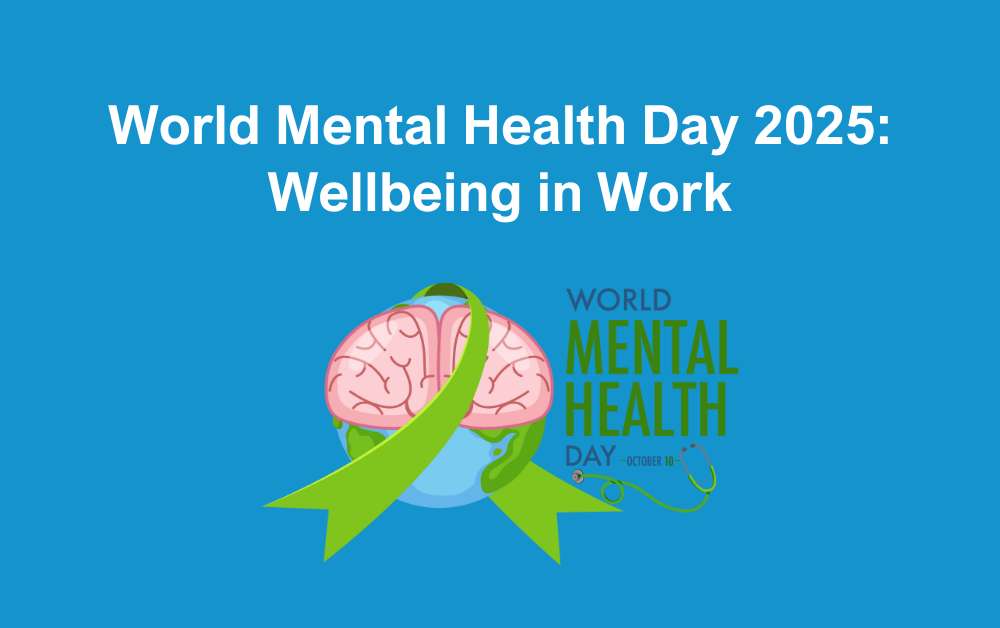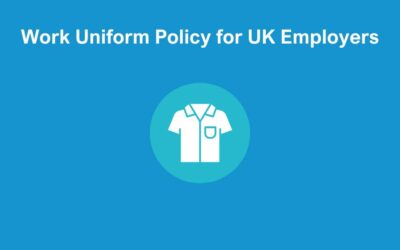At The HR Booth, we believe that employers should prioritise mental health in the workplace just as much as physical health. Therefore, World Mental Health Day 2025 is an important campaign to fight today for a brighter tomorrow.
The CIPD’s recent Health and Wellbeing at Work Survey showed that there has been a sharp increase in sickness absence. Mental ill health was at the top for long-term absences with 41% of people citing it as the top three causes for absence. 78% of people completing the survey said it was the main reason for short-term absence. Therefore, this shows employers must prioritise this to improve productivity and wellness in the workplace.
We asked our clients and employees to share their thoughts on what helps them maintain positive mental wellbeing — and what more could be done to support it.
How are Employee’s Feeling?
When asked to rate their current mental wellbeing on a scale of 1–10, the average score was 7.4, suggesting that most people feel fairly positive overall — but there’s still room for improvement.
What Helps Most
Across all responses, physical activity came out on top as the biggest boost to mental health. Walking, running, and spending time outdoors were the most popular choices, often described as a way to switch off from daily pressures.
Other popular ways to look after mental health included:
- Spending time with loved ones
- Practising mindfulness or relaxation
- Creative hobbies such as painting and writing
How Often People Make Time for It
Most respondents said they engage in these activities weekly or daily, showing a strong awareness of the importance of routine self-care.
Barriers to Better Wellbeing
The most common barriers were:
- Lack of time (due to work or family commitments)
- The weather
- Competing priorities and fatigue
These responses show that even when people know what helps, finding the time and space to do it can be a challenge.
What Would Help Most
When asked what resources would best support their wellbeing, people highlighted:
- Self-help resources and professional support services
- Apps and tools to manage mental health
- Opportunities for more open conversations at work about wellbeing
How Employers Can Support Better Work–Life Balance
Our survey highlighted that while many people know what supports their mental health — like walking, exercising, or spending time with family — the biggest barrier is often time. Busy schedules, workload pressures, and personal commitments mean that even simple wellbeing habits can be pushed aside.
For employers, this is a clear signal: creating a culture that values work–life balance isn’t just a nice idea, it’s essential. When employees have the flexibility and headspace to look after themselves, everyone benefits.
Practical Steps Employers Can Take
- Promote flexible working – Allowing staff to manage their hours or work remotely when possible helps them balance work with personal responsibilities.
- Encourage regular breaks and time outdoors – Simple reminders or team wellbeing challenges can make a big difference.
- Lead by example – When leaders take lunch breaks, switch off at reasonable hours, and talk openly about mental health, it sets the tone for everyone else.
- Offer wellbeing resources – Access to self-help tools, wellbeing apps, or mental health training can empower employees to take charge of their own wellbeing.
- Review workloads regularly – Ensuring that expectations are realistic helps prevent burnout and improves overall job satisfaction.
The Business Case for Work–Life Balance
Investing in wellbeing is not only the right thing to do — it also makes strong business sense.
- Improved productivity – Employees who feel supported and well-rested are more focused, creative, and efficient. Studies show that happier staff can be up to 20% more productive.
- Stronger workplace culture – A focus on mental health builds trust and loyalty. It helps create an environment where people feel valued and motivated to give their best.
- Reduced costs – By preventing stress-related absence and turnover, employers can save on recruitment and sickness costs. In fact, mental health-related absenteeism costs UK businesses billions each year — proactive support helps cut this significantly.
Ultimately, when employers champion work–life balance, it’s a win–win: employees feel better supported, and businesses see measurable improvements in performance, culture, and retention.
In Conclusion
Our survey shows that small, consistent actions make a big difference to mental health — but time and work pressures often get in the way. By creating supportive, flexible workplaces where wellbeing is prioritised, employers can help their teams thrive. Not only does this improve mental health and work–life balance, but it also strengthens productivity, culture, and long-term business success.
The CIPD Health and Wellbeing at work survey showed that employers are taking a more proactive approach to improve wellbeing in the workplace. 57% of employers have introduced a stand alone wellbeing strategy. This is a 13% increase from 2020. It’s the time to join the movement and be part of the change. If you would like help to introduce a wellbeing strategy that works for your business, contact us.







